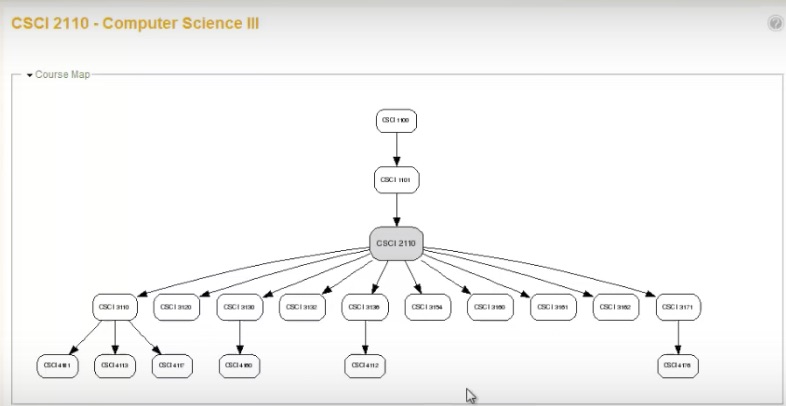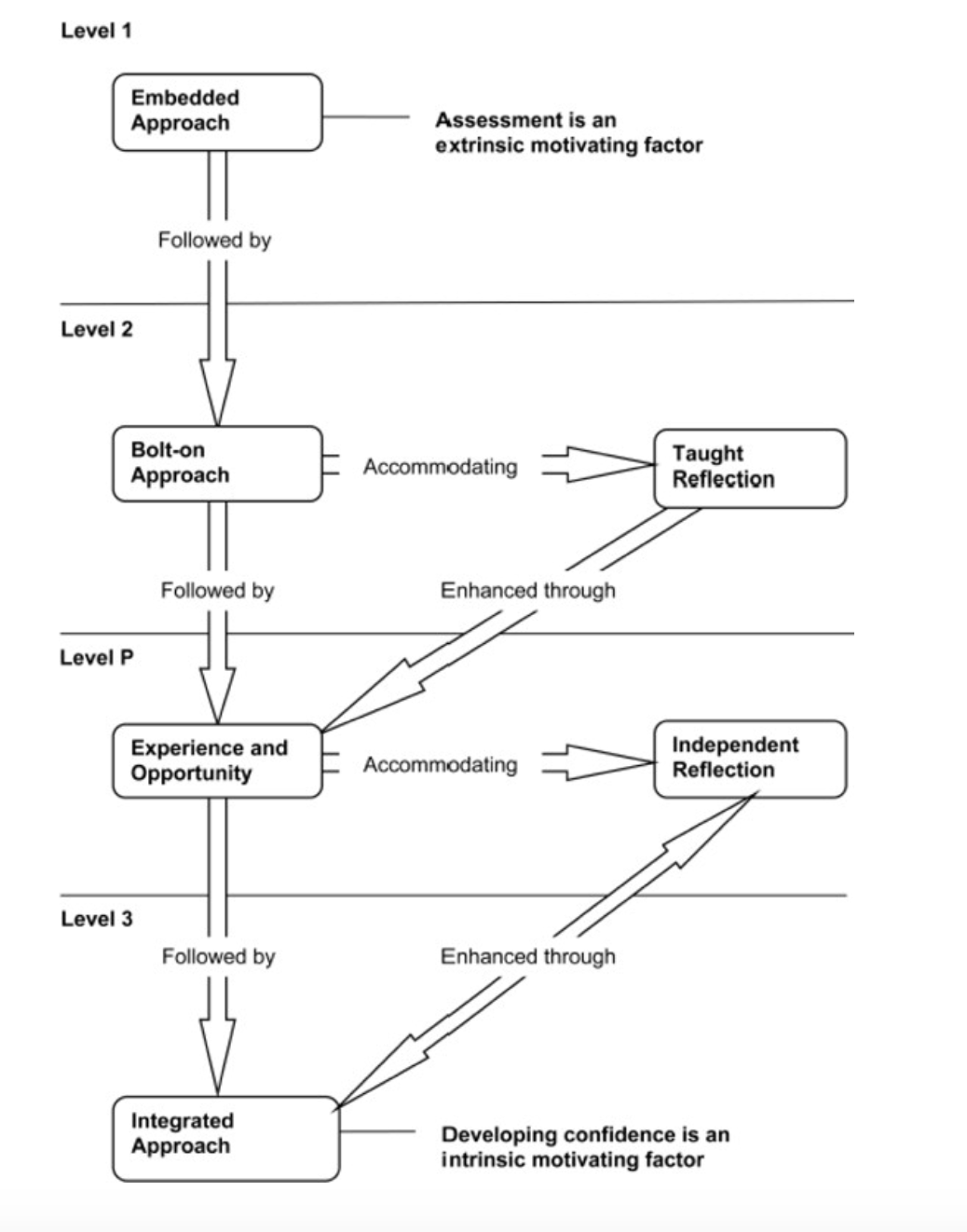
Rayner, P.J. (2021) Curriculum and program renewal: an introduction Edubytes, November
Chadha, D. (2006) A curriculum model for transferable skills development Engineering Education, Vol.1, No. 1
The Centre for Learning, Teaching and Technology at the University of British Columbia produces an excellent newsletter each month. The November issue focuses on curriculum and program renewal – looking at a program as a whole, rather than just a set of individual courses. As the author puts it:
Program renewal, also called curriculum renewal, is a process that departments and programs can use to answer questions about how the suite of courses offered in their specialization work in concert with one another. It’s a process that considers how the program as a multi-year educational whole can, and does, reach learning goals that no one course can do on its own.
This degree- or program-level perspective invokes program curriculum, focuses on the learning design of the entire degree, and asks questions about the program structure that holds all of the individual courses together in a cohesive learning experience for students.
The article looks into the why and how of curriculum renewal. Contact North’s Pockets of Innovation provides an excellent case study for the Bachelor of Computer Science at Dalhousie University. Curriculum renewal helped solve the problem of high drop-out from the program.
Curriculum renewal and skills development
Why my interest in curriculum renewal and what has this got to do with online and distance learning?
Skills or competencies?
One of the developments in online learning, particularly in the USA, is the development of competency-based learning. Competencies are defined together with employers and define the knowledge and skills that employers need (for more on competency-based learning see here or Competency-based learning in my book ‘Teaching in a Digital Age.’)
However I believe it is important to distinguish between competencies and skills, particularly what are called ‘soft’ or 21st century skills. Competency-based learning often aims for 100% proficiency, and ability to do a particular task or process absolutely right all the time. I argue though that ‘soft skills’ are different. These are skills such as creativity, critical thinking, independent learning, literacy, teamwork, communications skills. These have no limit. With practice and experience you continue to get better and better, or at least that is usually the objective.
Furthermore, competencies are job-specific. If that job and the tasks associated with it disappear, then the competency now has little value (short-hand typists for instance). Soft skills though have high transferability: good communication skills in banking will probably transfer equally well into working for a government service, or vice-versa. So for individuals, skills are lifelong, get better over time with experience and practice, and enable job mobility.
The relevance for curriculum planning or renewal
If skills then are developmental, in the sense that they build on previous work but change over time in terms of level, how do we take core 21st century skills such as critical thinking, and progress this through the curriculum? What do we add in critical thinking in history, for example, in the second year to what students already developed in their first year?
From research conducted by the Higher Education Quality Council of Ontario, very little, apparently. They found no progression in undergraduate students’ critical thinking from Year 1 to Year 4, compared with gains in numeracy and literacy. This is hardly surprising though if there is no strategy to focus deliberately on skills progression during the length of an academic program.
This is a teaching problem. We need to know how to not only teach skills, but also how to measure them and then know how to progress them year by year. Dalhousie University’s Faculty of Computer Sciences wrestled with this problem when it found almost a third of those entering the Bachelor of Computer Sciences program were not graduating. They found they needed to restructure the curriculum, so the skills and competencies were taught in the best order and so instructors teaching one course would know what students could do from previous courses, and what they needed to pass on to instructors at the next level.
How to teach 21st century skills
I believe we need to move from ‘implicitly’ teaching such skills to have an explicit method or agenda for 21st century skills development.I found Chadha’s paper very helpful in this. He points to three ways to teach such skills:
- embedding: this is equivalent to what I called ‘implicit’ learning of skills; teach the discipline and students will somehow ‘absorb’ the necessary skills
- bolting-on: skills are taught independently of the core discipline: an example might be a specialist course on digital literacy for medical students
- integrated:skills are developed and taught explicitly within the core discipline and the same amount of emphasis is placed on the development of transferable skills as technical abilities.
Chadha argues that all three ways are needed, at least in teaching engineering. He then goes on to provide a curriculum model for developing transferable skills:

More details will be found in Chadha’s paper.
This is just one possible model. I suggest a more specific way of teaching skills in Teaching in a Digital Age. My model emphasises practice and feedback, and suggests technology can play an important role in providing both opportunities for practice, and feedback, but always in conjunction with and under the control of an expert.
Developing a cross-curriculum skills development strategy may be easier in quantitative subjects such as mathematics, engineering or computer science, which makes it all the more important for subject areas such as humanities or social sciences, which often make heavy claims about developing 21st century skills, to develop their own models of curriculum development that enable the progression of such skills, and particularly their definition and measurement, throughout a program.
I believe a greater move to explicit high-level intellectual skills development is not only important for enabling individuals to handle an increasingly volatile, uncertain, complex and ambiguous world, but also to protect instructors from redundancy resulting from open access to content and knowledge which will be freely available through digital sources. Learners will look increasingly to experts for help with skills development, rather than delivery of content.
In the meantime, thanks to Edubytes for a timely and instructive article.









 Dr. Tony Bates is the author of eleven books in the field of online learning and distance education. He has provided consulting services specializing in training in the planning and management of online learning and distance education, working with over 40 organizations in 25 countries. Tony is a Research Associate with Contact North | Contact Nord, Ontario’s Distance Education & Training Network.
Dr. Tony Bates is the author of eleven books in the field of online learning and distance education. He has provided consulting services specializing in training in the planning and management of online learning and distance education, working with over 40 organizations in 25 countries. Tony is a Research Associate with Contact North | Contact Nord, Ontario’s Distance Education & Training Network.

